Showing 121–140 of 577 resultsSorted by latest
-
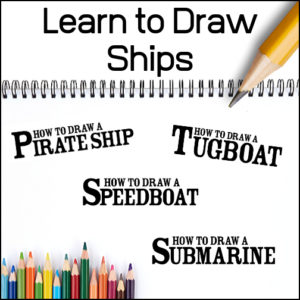 $1.50Buy Now
$1.50Buy NowStudents love to draw? Here are step by step instructions on how to draw these ships:
– pirate ship
– tugboat
– speedboat
– submarine -
 $2.00Buy Now
$2.00Buy NowGive your students a fun way to strengthen their knowledge of literary terms. This Elements of Literature Crossword puzzle will give students definitions of 20 terms and students must complete the puzzle using the correct terms. I have included an optional word bank (separate page), for students who may need the terms.
-
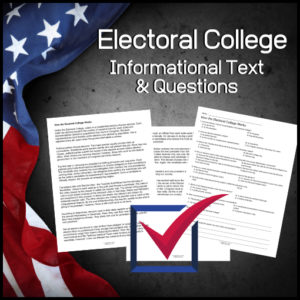 $1.50Buy Now
$1.50Buy NowHelp your students understand the Electoral College and how it functions in the democratic process of electing a United States president. This resource explains the process, how electors are chosen, how many electors represent each state, what happens on election day as well as January 6th, the amendment that implemented the Electoral College and more.
After students read the passage, they will answer 7 multiple choice, 1 true/false and 2 short answer questions. Answer key provided.
Flesch-Kincaid Grade Level: 5.91
Fry Readability Grade Level: 6 -
 $3.00Buy Now
$3.00Buy NowCreate excitement and interest about the planets of our solar system by displaying these colorful and informative posters!
I’ve included 2 sets (one with and one without Pluto)-
- – Set one: Mercury, Venus, Earth, Mars, Jupiter, Saturn, Uranus, Neptune
- – Set two: Mercury, Venus, Earth, Mars, Jupiter, Saturn, Uranus, Neptune, Pluto (described as now classified as a ‘dwarf planet’)
-
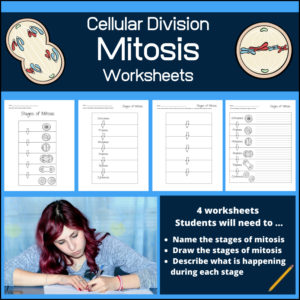 $2.00Buy Now
$2.00Buy NowReady to use stages of mitosis worksheets that can be used as study aids or for quizzes / tests.
There are 4 worksheets:
- #1: Students will name each stage of mitosis in order
- #2: Students will draw / illustrate each stage
- #3: Students will name and draw each stage
- #4: Students will describe what is happening / events of each stage
Answer key provided
-
 $3.50Buy Now
$3.50Buy NowThis Science / Biology resource provides colorful posters and worksheets for 3 stages of a butterfly’s life cycle: caterpillar, chrysalis, adult butterfly.
Each stage of life comes with a poster (labels showing the parts) and the following 3 worksheets:
#1: Students will label a picture of the specific stage and are given the names of the parts they are to label
#2: Students will label a picture of the specific stage but are not given the names of the parts (as they should have those memorized)
#3: Students are to both draw and label the specific stage. Parts they are to label of given.What parts are labeled for each stage?
- caterpillar: head, thorax, simple eye, mandible, walking leg, abdominal segment, proleg, anal proleg
- chrysalis: cremaster, abdomen, spiracle, wing, metathorax, mesothorax, antenna, prothorax
- adult butterfly: back leg, middle leg, front leg, spiracles, forewing, antenna, hind wing, veins, compound eye, ocellus, anus, proboscis, labial palpus
BONUS: All pages are also included in B/W format!
-
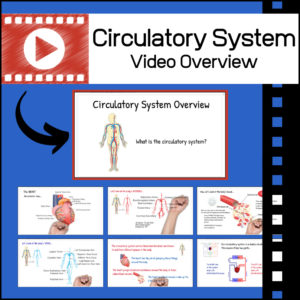 $6.99Buy Now
$6.99Buy NowThis 6:44 minute video product has been created to give BIOLOGY / ANATOMY / HEALTH students an overview of the human body’s circulatory system! Student will learn the major components of the system (names of major arteries and veins as well as parts of the exterior and interior of the heart) as well as the function of the heart, arteries, veins, red blood cells, white blood cells, platelets and plasma.
-
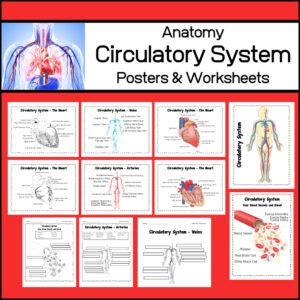 $4.00Buy Now
$4.00Buy NowThis Science / Biology / Health resource will help your students learn about the circulatory system of the human body! Included are 10 posters (each in color and b/w) and 5 different worksheets (each with and without a word bank)!
-
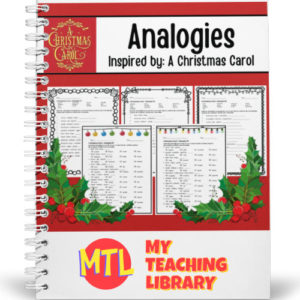 $2.50Buy Now
$2.50Buy NowAdd some literary device spice into your Christmas lesson plans with this set of analogy worksheets inspired by Dickens’ A Christmas Carol. This product includes 5 worksheets: 3 short answer (with word banks) and 2 multiple choice. Answer Keys provided
-
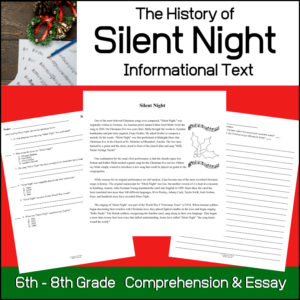 $1.50Buy Now
$1.50Buy NowIn this informational text lesson, students will learn about Christmas carol, Silent Night, which is one of the world’s most well-known Christmas songs. Written in 1816 by an Austrian priest named Father Josef Mohr, it has since been translated into more than 140 different languages and was even sung as part of the ‘Christmas Truce’ during World War I in 1914. Historic facts like these are included in this informational text.
After students read the text, they will:
1. Complete a short comprehension worksheet.
2. Write an opinion essay (choosing to write their opinion that answers one of two given questions). -
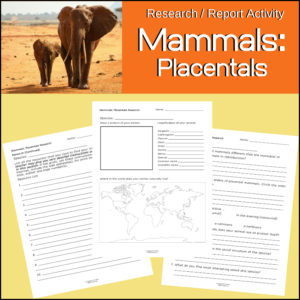 $2.00Buy Now
$2.00Buy NowPlacental mammals are the most diverse group of mammals with about 4000 discovered species and include dogs, cats, rodents, elephants, whales, cattle, pigs, humans and many more! If you are planning a study on these mammals, this product will guide students through their research and can be used as the end reporting tool!
-
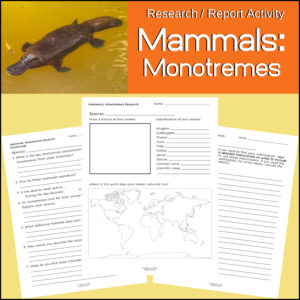 $2.00Buy Now
$2.00Buy NowThis science, animal study activity is designed to guide your students through the researching and reporting of any egg laying mammal (also known as Monotremes). These unusual mammals only reside in Australia and New Guinea. There are only five known species of monotremes: the platypus and four species of echidna.
This product will guide students through their research and can be used as the end reporting tool!
-
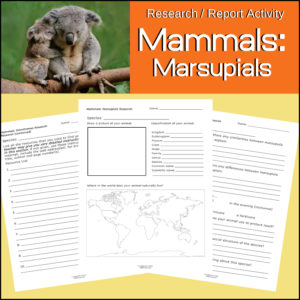 $2.00Buy Now
$2.00Buy NowStudents love kangaroos, wallabies, koalas and other pouch carrying animals also known as marsupials! This resource will guide students through their research on these amazing pouch carrying animals and can be used as the end reporting tool!
-
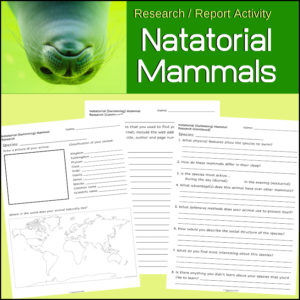 $2.00Buy Now
$2.00Buy NowAny mammal designed to swim such as a whale, sea lion, seal or walrus is considered a natatorial mammal. The term natatorial comes from the Latin natātor, natātōrem meaning “swimmer”. This product is perfect for your students if you want to assign a research & report project on water dwelling mammals. It will guide students through their research and can be used as the end reporting tool!
-
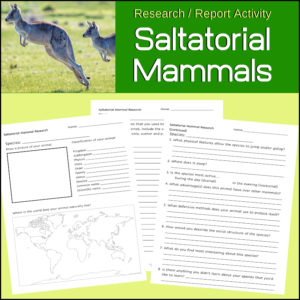 $2.00Buy NowOne way of categorizing animals is how they move. Mammals that are designed to jump, hop, gallop, or leap are called Saltatorial mammals such as the kangaroo, leopard, rabbit, horse, antelope and many others! This product is perfect to use as a research and report assignment to have students study mammals that jump, hop, gallop and/or leap! It will guide students through their research and can be used as the end reporting tool!
$2.00Buy NowOne way of categorizing animals is how they move. Mammals that are designed to jump, hop, gallop, or leap are called Saltatorial mammals such as the kangaroo, leopard, rabbit, horse, antelope and many others! This product is perfect to use as a research and report assignment to have students study mammals that jump, hop, gallop and/or leap! It will guide students through their research and can be used as the end reporting tool! -
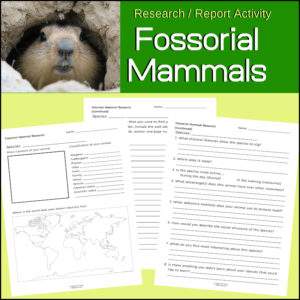 $2.00Buy Now
$2.00Buy NowBurrowing, ground dwelling mammals are known as fossorial mammals. Fossorial comes from the Latin fossor, meaning “digger”, thus mammals such as groundhogs, gophers, moles, rabbits and others are in this group. This resource will help students research and report on fossorial mammals as it guides students through their research and can be used as the end reporting tool!
-
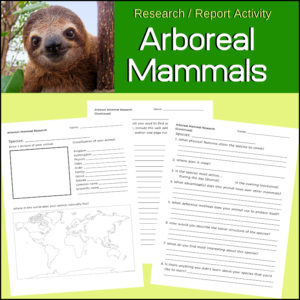 $2.00Buy Now
$2.00Buy NowDuring a study of animals (specifically tree-dwelling, arboreal mammals), students can use this product to research and report on animals such as the koala, monkey, sloth or possum. Any tree dwelling mammal is considered arboreal. Students can use this product as both a guide to their research as well as the end reporting tool!
-
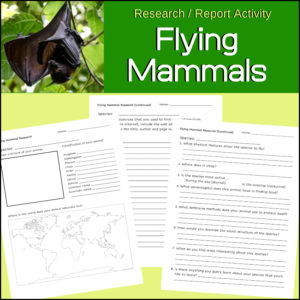 $2.00Buy Now
$2.00Buy NowIn the Science field of Zoology there is a group of mammals that are considered ‘flying’ mammals. This product makes it easy to assign students to research and report on one of these ‘flying’ mammals! Students will be able to use the product to both guide their research and use as their reporting tool.
-
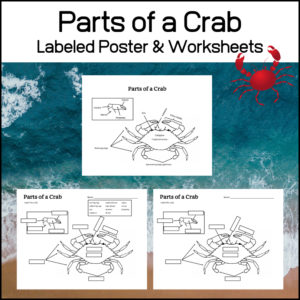 $1.25Buy Now
$1.25Buy NowIs your Science class studying (or preparing to study) ocean life, crustaceans or the phylum Arthropoda? This resource, Parts of a Crab – Poster & Worksheets, includes a labeled poster of a crab and 2 worksheets (or quizzes).
-
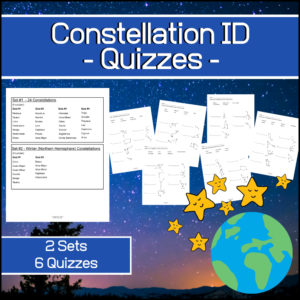 $2.50Buy Now
$2.50Buy NowUse this resource, Constellation Quizzes, to assess student knowledge of the imaginary star outlines or patterns on our ‘celestial sphere’ or they can be used simply as worksheets during the learning of the constellations! I’ve included 2 sets (with a total of 6 quizzes).
Each quiz will give students pictures and names of constellations and students will need to identify (match) each.

